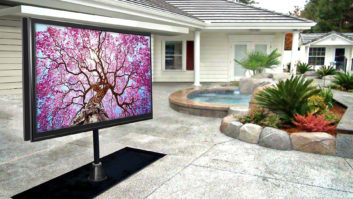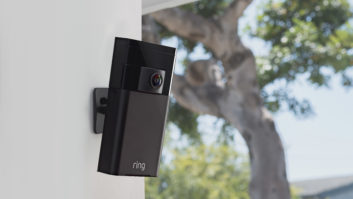Regular Checkups Ensure Client Satisfaction, Add to Revenue Stream

Anthony Grimani ([email protected]) is president of Performance Media Industries, with offices in Novato and San Anselmo, California.
During the last year, you’ve installed super-high-impact, allegedly reliable home theaters for your favorite clients. You trust that these rooms are all still working right, but shouldn’t you also verify it? I am talking about a new “old way” to generate revenue: servicing your clients’ systems with a regular check-up visit. You can do this in person, or–if you leverage technology the right way– without ever leaving your offices.
It almost always find some type of defective or inoperable gear when I do calibration checkups. The latest surprises from last week’s calibration session included a blown amplifier that took down the left-channel woofer, a defective signal processor that muted the surround speakers, and a surround decoder that had failed a few months earlier and didn’t have all the settings reloaded correctly. A few hours of troubleshooting and gear swapping got everything back in order; the client was smiling, and I walked off with a nice check for the work.
Due to the laws of chaos physics on the myriad pieces of gear and interconnections that make up a sophisticated home theater, you should prepare for a checkup visit at least every six months, and make it part of your recurring revenue stream.
As a general rule, I suggest doing at least the following quick checks on a system’s vital signs. For audio, drop the 5.1 Audio Toolkit test DVD from Gold Line into the player and run Title 1, Chapter 19. It will play a seven-channel series of wideband pink noise test signals in sequence around the whole room (L/C/R/Sr/Br+Bl/Sl). You can then play Title 1, Chapter 16 (or better yet Title 0.1, Chapter 1) to verify the presence and potency of the subwoofers. Further, you can play Title 1, Chapters 1-7 and use a sound level meter from Radio Shack to verify that levels of the individual channels are still correct. You should probably also conclude this process with a quick listening test to your favorite demo disc. Be sure to use multiple microphone positions in order to get a spatial average around the main listening area.

Even though you trust the home theaters you installed work well, you should still verify so with a regular system checkup.
For video, you can drop the recent Joe Kane Productions HD Basics Blu-ray Disc into the tray, and go right to the basic test patterns. Check through the color bars and PLUGE signals using a blue filter or the blue glasses you get from THX. Then check the focus, resolution, and geometry alignment. Here again, if all the patterns look good, take a gander at the demonstration materials on this disc.
If all goes well, this process will take about an hour, but if there are problems, there is no telling when you will finish troubleshooting.
For remote audio monitoring, you can set up a reference microphone in a concealed area of the room. You can measure the response of each speaker after the room is fully calibrated and equalized using high-grade mics at the seating locations. Then, you can measure the resulting response of these speakers with the basic mic hidden in the ceiling fabric layers, near a sconce, or some other tricky place to plant a “spy” mic. This mic would be plugged into an analyzer system–either running on a dedicated box, such as the TEF network addressable analyzers, or connected to a PC with a remote desktop hook-up. You can generate the right stimulus from either a dedicated super-basic DVD player controlled by remote or the same PC running an S/PDIF signal to a switched input of the audio path. If you have references of what the audio is supposed to look like at the concealed mic location, you can easily test it all remotely. If you are tricky about it, you can even broadcast the mic sound over the internet back to your office.
On the electronics side, some manufacturers offer remote IP access to their products, which comes in handy if the client accidentally changes some of your default settings, or a power surge wipes out the memory.
Things are a bit trickier for video, but you can probably do a lot with a decent HD camera plugged into an HD IP monitoring station. The feed would go back to your office, and you could compare the video signals against the reference measured right after the in-room calibration (ISF or other). If something looks way out, it’s time for a drive to the client’s place with a new bulb, video analyzer, and even a new HDMI cable or EDID control box in your bags.
Remote monitoring and/or onsite checkups of your clients’ home theaters are crucial to the ongoing enjoyment of the rooms and continued referrals. You can leverage technology to make it painless for you, you can charge for the service contract, and you will keep your clients happy in the process. It’s good to trust and verify.
Chase Walton contributed to this column.







